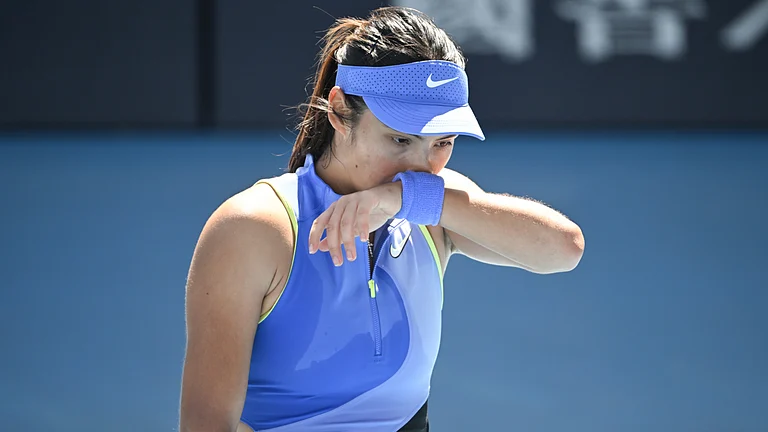It was a moment of shame and deep embarrassment for Gouri Bhadra, a 27-year-old transgender woman, who was forced to explain to the authorities why she could not wear the uniform tailored for men. It eroded her self-worth, she recollects. Bhadra works at the Kochi Metro in the ticketing section along with nine other transwomen. Kochi Metro earlier drew nationwide attention and applause when it appointed 23 transpersons based on their qualifications. However, a majority of them quit their jobs, unable to deal with multiple forms of discrimination.
“We were instructed to wear pants and shirts, similar to what men wear. We felt extremely uncomfortable complying with this directive,” says Bhadra. Authorities rejected their plea to allow them to wear salwar or churidar along with an overcoat. Bhadra found herself having to stand in front of a group of men, explaining why their bodies did not conform to the expectations of men’s clothing. “We would look like cis men in such attire, and we don’t want to appear like that,” Bhadra emphasises. “When I expressed that my body does not fit into a man’s costume, I received a very insensitive piece of advice. I was told to schedule a date for sex reassignment surgery and provide the necessary documentation. Whether to undergo the surgery or not is one’s choice. There are several members in the community who do not wish to undergo the surgery. The non-binary, non-conformist people should be able to live a life as per their choice.” Bhadra, with the help of other members of the transgender community, took up the matter with the state’s minister for social justice, R Bindu, to resolve the issue. “The minister took a decision favourable to us,” says Bhadra.
“For the cis-gender society, refusing to wear the official uniform might be viewed as arrogance, but they fail to understand the trauma experienced by a transwoman when forced to wear a man’s costume,” says Sheethal Shyam, a social activist and former member of the State Transgender Board who prefers to be identified as a trans person rather than a transwoman. “The queer community fundamentally embraces diversity; there are individuals who resist being confined to specific identities. Some opt for surgery, while others do not. It all depends on how they wish to present themselves. Beautifying and enhancing one’s body are integral aspects of survival and self-expression,” emphasises Shyam.

For transgender individuals, the act of body enhancement holds great significance, serving as an integral aspect for both survival and self-expression. Embracing one’s self-perceived gender identity often involves aligning physical characteristics with an individual’s inner sense of self. Body enhancement, whether through surgical procedures, hormone therapy, or other means, becomes a vital step towards achieving this alignment. “In the past, wearing make-up or traditional costumes like sari was viewed as a conservative concept by feminists. I have encountered questions about why queer people are embracing things that were once rejected by feminists,” says Prijith P K, a queer activist and former president of Queer Rhythm, an organisation based in Thiruvananthapuram. Prijith contends that such arguments stem from the inability to comprehend how queer individuals express themselves and how these expressions contribute to breaking free from the heteronormative beauty standards, ultimately promoting diversity in society.
Many queer activists like Prijith hold the view that beyond the physical aspects, this plays a crucial role in the emotional and psychological well-being of trans individuals, providing a pathway to affirm their identity in a society ruled by cis-normative norms. The queer community believes that the journey of body enhancement becomes a powerful narrative of self-discovery, empowerment and resilience, allowing trans individuals to authentically express themselves and navigate a world that imposes restrictive norms.
“The feminism that once cast a condescending look at women enhancing their bodies is a thing of the past; now we live in times of intersectional feminism.”
Queer individuals often find themselves subjected to the pervasive pressure of conforming to cis-normative beauty standards established by patriarchal societies and the cosmetics industry. These standards, rooted in traditional and binary notions of gender, prescribe specific ideals of appearance that may not align with the diverse identities within the queer community.
“The queer community has been specifically targeted by the cosmetics industry, and it is a cause for concern that queer individuals are falling prey to the cut-throat competition in the market offering body-enhancing surgeries and beauty products,” says Surya Ishaan, a transgender activist and make-up artist. Despite having a well-established career in the beauty industry, Ishaan does not hesitate to express concern about the widespread exploitation of the queer community by the cosmetics industry. Apart from traditional surgeries such as vaginoplasty and breast implantation that were once the primary focus for transgender individuals, a plethora of cosmetic surgeries are now available in the market.
“Tremendous changes have taken place in cosmetology over the past few years. Surgeries to alter the shoulder, forehead and jawline have become available, with 10 to 14 types of surgeries solely dedicated to facial enhancement,” shares Ishaan. Both Ishaan and Shyam express concern that the unregulated cosmetics industry is becoming detrimental to the well-being of the community. “With no regulations to monitor the private sector, community members often fall victim to the exploitation imposed on them by the market,” asserts Ishaan.
Harry Haris, a Kathak learner who used to work with the State AIDS Control Society in Kerala, and non-binary by choice, says: “Community members who are obsessed with make-up and beautification are, in fact, idealising stereotypes about women against which feminists have fought long battles.” He expresses concern about community members prioritising identity assertion over education and career.
“The feminism that once cast a condescending look at women enhancing their bodies is a thing of the past; now we live in times of intersectional feminism,” says Shyam. While acknowledging the severe pressure exerted by cisgendered society in enforcing heteronormative beauty standards on the community, Shyam emphasises the need for community members to define their own boundaries by exploring their own bodies and beauty.
Shyam consciously stayed away from undergoing too many cosmetic surgeries and hormone treatments to conform to beauty standards dictated by a society governed by cisgender norms. “I chose not to undergo hormone therapy due to its associated health risks. I prefer using herbal products as much as possible. I am confident about my physical appearance, and I have no desire to conform to someone else’s standards in the beauty industry. I am who I am,” asserts Shyam.
Shyam underscores the tremendous pressure within the community to conform to cis-normative beauty standards. “I have often faced pressure from members of the queer community to undergo various beauty treatments, but I am clear about what I want, and I know how to assert my boundaries,” says Shyam.
MORE FROM THIS ISSUE
The societal expectation for individuals to adhere to predefined norms, such as particular body shapes, facial features, or grooming practices, can lead to a sense of exclusion and marginalisation for those who deviate from these standards. The cosmetics industry, often complicit in perpetuating these norms, markets products based on heteronormative ideals, reinforcing the notion that certain physical attributes are essential for acceptance and beauty. For many queer individuals, navigating these expectations becomes a complex journey where they must balance self-expression with societal pressures. The cosmetics industry, with its emphasis on heteronormative beauty ideals, often overlooks the rich diversity within the queer community. This exclusionary approach not only reinforces harmful stereotypes, but also perpetuates an environment where queer individuals may feel compelled to undergo cosmetic procedures or conform to standards that do not authentically represent their identities.
(This appeared in the print as 'To Behold A Rainbow')
































